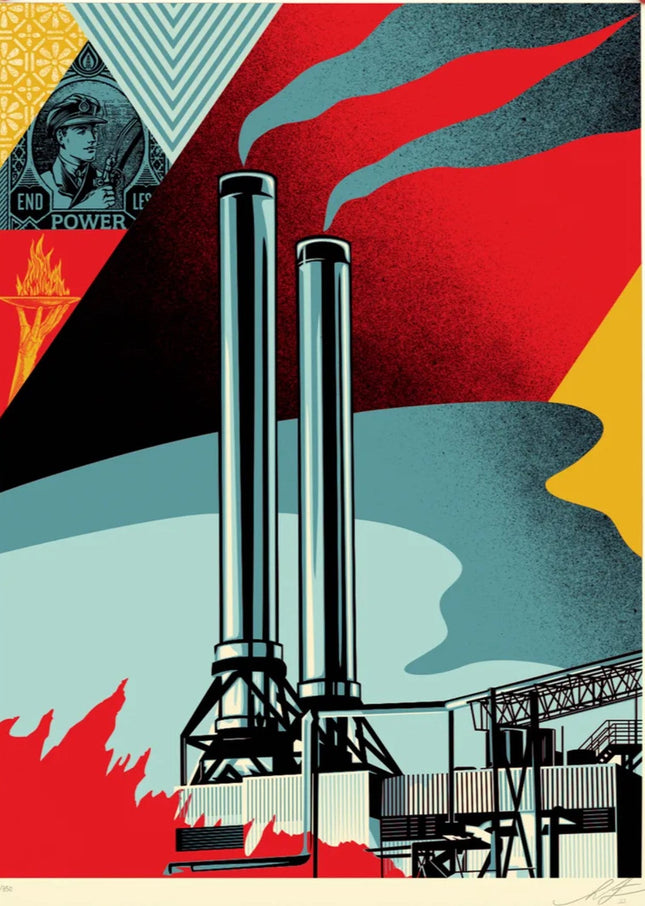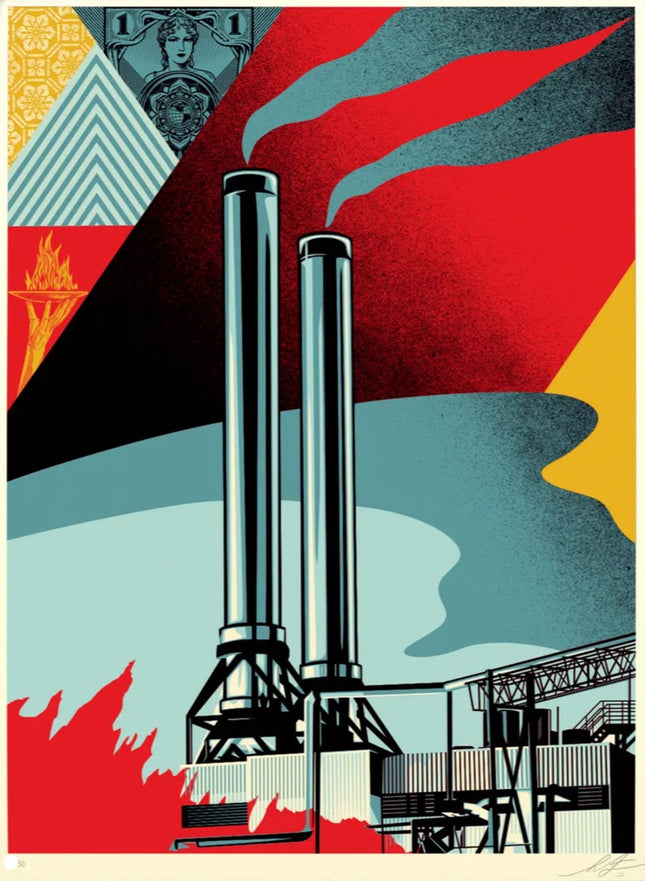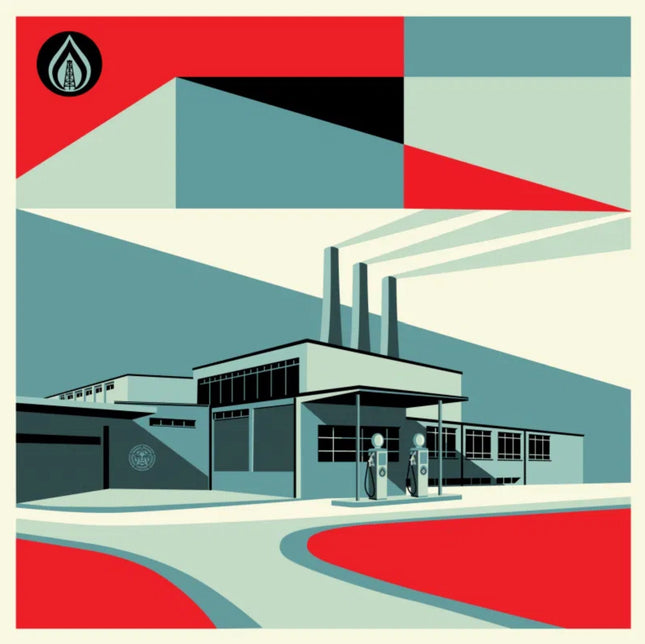
Industry & Industrial

Shepard Fairey- OBEY Factory Stacks- Endless Power Silkscreen Print by Shepard Fairey- OBEY
Factory Stacks- Endless Power 6-Color Hand-Pulled Limited Edition Silkscreen Print on Fine Speckletone Art Paper by Shepard Fairey Rare Street Art OBEY Pop Artwork Artist. 2022 Signed by Shepard Fairey Numbered 18x24 inches. Screenprint on thick cream Speckletone paper. Numbered edition of 350. "These “Factory Stacks” images combine the austere, angular power of factory architecture with graphic elements commenting on what we promote and embrace as a society even when those things are destructive. The fossil fuel industries have tremendous power economically, but we now know that not only are fossil fuel sources finite but that using them is terrible for climate change and, therefore, the eco-systems that sustain life on our planet. Unfortunately, due to the political power of these industries and public apathy about climate change, the government subsidizes the fossil fuel industries for billions even as they damage the environment. The government works for the citizens, so the choice is ours. Do we support endless power for wealthy fossil fuel corporations? Or policies that put the earth first with the planet before profits? Please read Naomi Klein’s THIS CHANGES EVERYTHING to better understand the conflict between economic interests and climate change. A portion of the proceeds from the sale of this print will go to Greenpeace to fight climate change. Thanks for caring.” – Shepard
$572.00

Shepard Fairey- OBEY Factory Stacks- Earth First Silkscreen Print by Shepard Fairey- OBEY
Factory Stacks- Earth First 6-Color Hand-Pulled Limited Edition Silkscreen Print on Fine Speckletone Art Paper by Shepard Fairey Rare Street Art OBEY Pop Artwork Artist. 2022 Signed by Shepard Fairey Numbered 18x24 inches. Screenprint on thick cream Speckletone paper. Numbered edition of 350. "These “Factory Stacks” images combine the austere, angular power of factory architecture with graphic elements commenting on what we promote and embrace as a society even when those things are destructive. The fossil fuel industries have tremendous power economically, but we now know that not only are fossil fuel sources finite but that using them is terrible for climate change and, therefore, the eco-systems that sustain life on our planet. Unfortunately, due to the political power of these industries and public apathy about climate change, the government subsidizes the fossil fuel industries for billions even as they damage the environment. The government works for the citizens, so the choice is ours. Do we support endless power for wealthy fossil fuel corporations? Or policies that put the earth first with the planet before profits? Please read Naomi Klein’s THIS CHANGES EVERYTHING to better understand the conflict between economic interests and climate change. A portion of the proceeds from the sale of this print will go to Greenpeace to fight climate change. Thanks for caring.” – Shepard
$572.00

Shepard Fairey- OBEY Downward Trajectory Silkscreen Print by Shepard Fairey- OBEY
Downward Trajectory Hand-Pulled 4-Color Silkscreen Print on Cream Speckletone Fine Art Paper by Artist Shepard Fairey Limited Edition Pop Art Artwork. 2019 Signed & Numbered Limited Edition of 500 Artwork Size 24x24 “Downward Trajectory is one of the many new works featured in my 30th-anniversary show in Los Angeles, “Facing the Giant: Three Decades of Dissent and New Works,” -Shepard Fairey Shepard Fairey's work is highly political and social, not only because he is incorporating politicians and slogans in it but more importantly because the artist is primarily interested in approaching as many people as possible, exhibiting his work in the covers of the books, which we read, in the music albums, to which we listen, and on the walls of the streets, where we walk. “If I put art in a daring spot, it’s more moving to the viewer and demonstrates my conviction.”, he says. After all, Fairey, in many cases, directly expresses his views on politics and society, whenever he is given the chance. For example, in the aftermath of the “Hope” poster, he commented the following: “Obama has had a really tough time, but there have been a lot of things that he's compromised on that I never would have expected. I mean, drones and domestic spying are the last things I would have thought [he'd support]”. The political aspect of his work can, also, be seen under the spectrum of Fairey’s activism and humanitarian activity. Many of his works have been created as part of activism campaigns or were sold to support causes relevant to the Arts, animal rights, poverty, medical research, the environment, etc. The artist, however, doesn’t identify himself as an activist: “People ask me if I’m an activist, and my answer is no. I’m an artist with a point of view, but I want to do my part to supplement activist causes I believe in. I feel fortunate to connect with people who find my imagery useful and help spread it.”
$539.00




